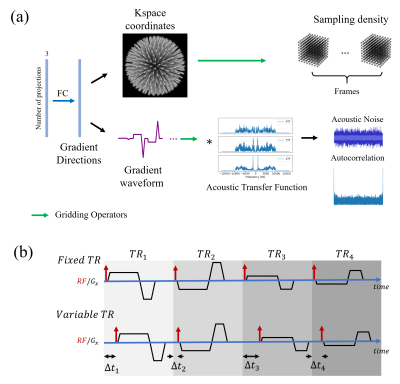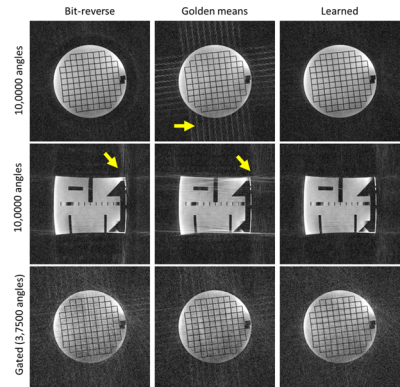Chenwei Tang1, Laura B Eisenmenger2, Steven Kecskemeti3, and Kevin M Johnson1,2
1Department of Medical Physics, University of Wisconsin-Madison, Madison, WI, United States, 2Department of Radiology, University of Wisconsin-Madison, Madison, WI, United States, 3University of Wisconsin-Madison, Madison, WI, United States
1Department of Medical Physics, University of Wisconsin-Madison, Madison, WI, United States, 2Department of Radiology, University of Wisconsin-Madison, Madison, WI, United States, 3University of Wisconsin-Madison, Madison, WI, United States
3D radial sampling can be optimized using sub-TR shifts and neural network angle optimization to obtain better sampling distribution and whiter acoustic noise.

(a) Schematic representation of the unsupervised neural network for better sampling uniformity and reduced acoustic noise autocorrelation. The two green arrows indicate gridding operators. The gridding operator for kspace coordinates grids kspace to 4D array (3D + time) for assessing sampling density. (b) In our design, the TR is variable with a small delay and learned delay prior to excitation. These delay values are learned though gradient descent of the acoustic loss function through the gridding operator.

Phantom comparison of bit-reverse, golden mean, and learned view orders demonstrate a high level of sampling flexibility in learned sampling. Using 10,000 angles, learned angles avoid streak artifacts which occur in both bit-reverse and golden means (arrows). Subsampling acquisitions to 3750 projections maintains a low level of coherent artifact.